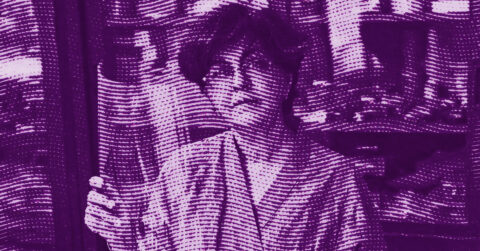Listen to me carefully, you bunch of snobs, while you all ran after the latest empty conceptual installations, an Australian woman armed simply with a piece of wood, gouges, and watercolors was giving us a lesson on the revealing power of the intimate. Cressida Campbell, that alchemist of the ordinary, spent several decades transforming domestic scenes into paintings of stunning beauty that transcend their apparent simplicity.
In an era obsessed with groundbreaking novelty, Campbell chose the path of silent resistance. Her still lifes, harbor views, and interiors are almost painfully meticulous to contemplate, demanding an attention that our digital society seems incapable of sustaining. Each work, whether a painted engraved board or a unique print, represents weeks, sometimes months of work. This temporal luxury is political in itself.
Campbell’s work confronts us with our own impatience. Her watercolors on engraved wood then printed in unique editions, a process she has perfected since her studies, require a contemplative commitment that our culture of speed regards as suspect. Her hybrid technique, halfway between painting and printmaking, is the antithesis of our instant gratification society.
Campbell’s singularity lies in this paradoxical relationship with time. As philosopher Henri Bergson teaches us, there is a profound distinction between time measured by the clock and “pure duration”, that subjective experience of time which escapes quantification [1]. Campbell’s works embody this Bergsonian duration. In “Night Interior” (2017), the light filtered through the curtains creates a suspended atmosphere where everyday objects, a table, a chair, a book, become actors in an intimate temporal theater.
Bergson insisted on the importance of “intuition” as a means to grasp this lived duration, as opposed to analytical intelligence which can only grasp the frozen instant. Campbell, in her creative approach, seems to adopt this intuitive stance, inviting us to a direct sensory experience rather than an intellectualized reading. Her still lifes are not static compositions but moments of life captured in their imperceptible movement.
Let’s take “Poppies” (2005), where a vase of flowers seems to vibrate with an inner life, almost tangible. It is not simply a botanical representation but a visual meditation on the passage of time. Bergson wrote that “duration is the continuous progress of the past which gnaws at the future and swells as it advances” [2]. Campbell’s flowers, in their delicate fullness, already bear the signs of their inevitable withering while celebrating their present beauty.
What sets Campbell apart from her contemporaries is precisely this acute awareness of temporality inscribed in each object. Her domestic interiors are never frozen but seem to breathe with a silent life. The light bathing “Interior with Red Ginger” (1998) is not simply a pictorial effect but a concrete manifestation of flowing time, transforming the space through its fleeting presence.
The filmmaker Andrei Tarkovsky, in his work “Sculpting in Time,” speaks of cinema as an art that “sculpts time.” Campbell, with her static means, paradoxically achieves a similar result. Her compositions capture what Tarkovsky calls “the pressure of time,” that ineffable presence which gives objects their particular aura [3]. Look at “The Verandah” (1987), and you will almost feel the sea breeze, hear the slight clinking of objects, perceive the slow degradation of the wood under the effect of salt and sun.
For years, institutions and critics relegated her to the status of a “decorative” artist, that condescending term the establishment often reserves for female artists who refuse grandiose postures. They failed to see that beneath the apparent softness of her compositions lay a quiet radicalism, an affirmation of the value of attentive looking in a world of continuous distractions.
Campbell’s work particularly resonates with the reflections of sociologist Georg Simmel on the experience of urban modernity. In his essay “The Metropolis and Mental Life,” Simmel analyzes how the intensification of nervous stimuli in the modern metropolis produces a blasé attitude, a dulling of sensitivity as a defense mechanism [4]. Faced with this sensory anesthesia, Campbell proposes a retraining of the gaze.
Her paintings act as antidotes to what Simmel identifies as “the intensification of nervous life” characteristic of our era. By inviting us to contemplate a seashell arrangement, an empty chair bathed in light, or a garden after the rain, she offers us what modern city life takes away: the capacity for sustained attention, the perception of nuances, the appreciation of slow rhythms.
Simmel observed that “the essence of the blasé attitude consists in a blunting of the power of discrimination.” Campbell fights precisely this tendency by forcing us into meticulous observation. Her woodcuts, with their infinite details and subtle chromatic modulations, demand and reward a discriminating gaze. They restore our ability to perceive the differences that make sense.
In “Eucalypt Forest,” the Australian forest is not reduced to a general impression but revealed in the singularity of each trunk, each leaf, each play of shadow. This microscopic attention to the particular is the aesthetic manifestation of what Simmel called “qualitative individualism,” that resistance to homogenization characteristic of modern societies.
Campbell practices a form of visual sociology, documenting not only contemporary Australian domestic spaces but also the relationships we have with these spaces. Her interiors are never neutral; they are charged with social meanings, personal histories, traces of habitation. The very absence of human figures makes these meanings more tangible.
Take “Bedroom Nocturne” (2022), this circular work that captures an unmade bed in the twilight. It is not simply an exercise in technical virtuosity, but a meditation on intimacy, on the boundaries between public and private space, on the daily rituals that structure our lives. Simmel would have recognized in this work an exploration of what he called “the forms of socialization,” those spatial configurations that express and influence our social relationships.
What strikes in Campbell’s paintings is their way of transforming ordinary objects into emblems of a subtle Australianness. Her views of Sydney Harbour, her floral compositions featuring native flora, her interiors bathed in a specifically Australian light, all constitute a poetic mapping of contemporary Australian identity, far from tourist clichés.
There is in her work a striking parallel with the Japanese ukiyo-e prints that influenced her so much. Like masters Hokusai or Hiroshige who captured the “images of the floating world,” Campbell seizes ephemeral moments, transitional configurations of reality. But where the Japanese artists celebrated urban pleasures, Campbell finds her subject in the poetry of the domestic, in those intermediate spaces where life unfolds without emphasis.
Look closely at “Shelf Still Life” (2012), where vases and nasturtiums are arranged in front of fragments of ukiyo-e prints. This mise en abyme reveals Campbell’s keen awareness of her artistic lineage, while asserting her difference. The Japanese artists used multiple blocks for their color prints; she uses only one, but paints it with a meticulousness that rivals their techniques.
In this work as in others, Campbell plays with the conventions of framing, asymmetry, and perspective. She borrows from the Japanese their sense of composition but adapts it to her deeply Australian vision. This creative appropriation constitutes a fascinating transcultural dialogue, enriching both traditions without distorting them.
Campbell’s media discretion contrasts with her popularity among private collectors. Her works now reach dizzying prices, over 500,000 Australian dollars for “The Verandah” in 2022. This late market recognition has not altered her approach. She continues to produce five or six works per year, refusing to speed up her creative process to satisfy demand.
This deliberate slowness is perhaps her greatest provocation in a contemporary art world obsessed with productivity and constant novelty. Campbell reminds us that some things, patient observation, technical refinement, the maturation of a vision, cannot be rushed. In this, she embodies a form of resistance to the dominant cultural capitalism.
Her recent works show an evolution towards more complex compositions, subtler plays with light, increased confidence in the treatment of spaces. The tondi (circular works) she has begun producing in recent years represent a new compositional challenge she meets brilliantly. In these perfect circles, the straight lines of interiors create fascinating visual tensions, as in “Book, Chair and Black Bamboo” (2021).
If Documenta and the Venice Biennale have not yet recognized Campbell’s genius, it may be because her work defies easy categorization. It is neither traditional nor avant-garde, neither conceptual nor purely technical. It occupies that infinitely fertile intermediate space where rigorous observation of reality meets the freedom of formal invention.
The retrospective exhibition at the National Gallery of Australia (from September 24, 2022 to February 19, 2023), which presented more than 140 of her works, finally marked a major institutional recognition. It was time for museums to catch up with what private collectors have long known: Cressida Campbell is one of the most unique and accomplished voices in contemporary Australian art.
In an era obsessed with technological innovation, Campbell reminds us that some ancient techniques, like wood engraving, still contain unexplored possibilities. Her work demonstrates that true originality does not necessarily lie in spectacular breakage, but sometimes in the patient deepening of a personal path.
What is extraordinary in her work is the way she manages to reconcile technical precision and atmospheric sensitivity. Her interiors, such as “Night Interior” (2017), are both rigorously constructed and bathed in an ambiance that defies measurement. This tension between exactness and suggestion is one of the most powerful driving forces of her work.
Campbell offers us a valuable lesson: in a world saturated with images, true subversion is not to shock, but to learn to see again. Her paintings do not shout to attract attention; they wait for us to take the time to discover them, like discovering a landscape at dawn, in silence and attentiveness.
If you still think Campbell is simply a “decorative” artist, you have misunderstood. Her work is a visual meditation on time, memory, the beauty of the everyday, and a masterful demonstration of what art can still accomplish with the most traditional means. She has transformed a hybrid technique into a personal language, capable of expressing the subtlest nuances of contemporary experience.
In an art world dominated by postures and discourse, Campbell reminds us of a fundamental truth: art is above all a matter of vision. And what a vision hers is! Attentive, patient, in love with the visible world in all its manifestations. A gaze that transforms the mundane into the extraordinary, not by magic, but by the grace of true attention.
- Bergson, Henri. Essai sur les données immédiates de la conscience. Presses Universitaires de France, 1889.
- Bergson, Henri. L’Évolution créatrice. Presses Universitaires de France, 1907.
- Tarkovsky, Andrei. The Time Sealed. Cahiers du cinéma, 1989.
- Simmel, Georg. “The Great Cities and the Life of the Mind” in Philosophy of Modernity. Payot, 1989 (original text from a lecture given in 1902 at the Gehe Foundation of Dresden, and published the following year in the journal Jahrbuch der Gehe-Stiftung).
















